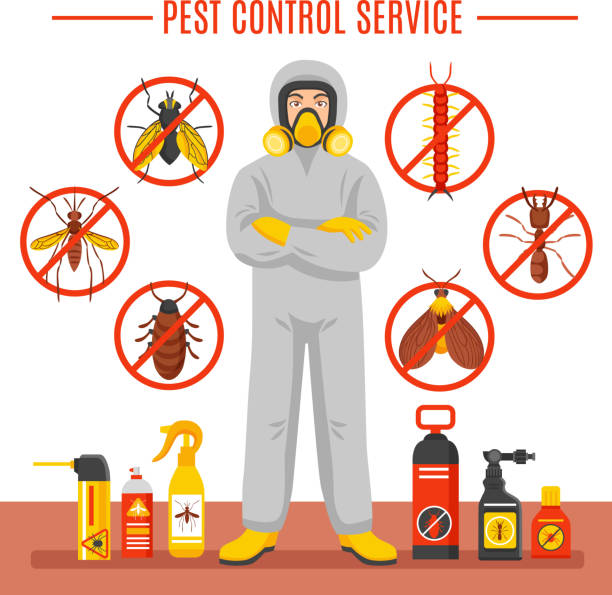High-quality Pest Control to keep your home clean and pest-free.
Eco-Friendly Pest Control Approaches for Handling Wildlife in Urban Locations
Urban locations usually find themselves at the crossway of human activity and wild animals, leading to special challenges in bug monitoring. These approaches not just protect the setting however also enhance neighborhood involvement in wild animals administration. As metropolitan populations proceed to grow, recognizing the characteristics of wild animals interactions comes to be increasingly vital.
Understanding Urban Wildlife Characteristics
Comprehending Urban Wildlife Characteristics is important for establishing efficient and environment-friendly pest control approaches. Urban areas are increasingly becoming environments for numerous wildlife types, driven by variables such as environment fragmentation, food accessibility, and human infringement. Acknowledging these characteristics enables a nuanced method to pest monitoring that aligns with eco-friendly concepts.
Urban wildlife often consists of varieties such as raccoons, squirrels, and birds, which adapt to city settings, locating specific niches in environment-friendly areas, parks, and also houses. Their presence can bring about conflicts with humans, especially when they manipulate human sources for food and sanctuary. Comprehending the actions and environmental functions of these varieties educates methods that minimize adverse interactions while promoting biodiversity.
Furthermore, acknowledging the interdependencies within metropolitan ecosystems aids in identifying important areas for habitat conservation and reconstruction. This expertise adds to the development of integrated pest management (IPM) strategies that take into consideration the eco-friendly equilibrium, thus reducing reliance on hazardous chemicals. By cultivating coexistence in between human beings and city wildlife, cities can produce healthier environments that profit both citizens and regional ecological communities, leading the method for sustainable urban living.
All-natural Repellents and Deterrents
All-natural repellents and deterrents offer a sustainable alternative to conventional pest control methods by utilizing the power of nature to keep unwanted species at bay. These environmentally friendly services normally use plant-based ingredients, vital oils, and various other normally taking place compounds that prevent bugs without hurting the atmosphere.
One effective all-natural repellent is peppermint oil, which is recognized to push back rats and bugs. Its strong aroma is undesirable to lots of insects, making it a popular selection for city settings. Vinegar and citrus peels can offer as deterrents, as their solid odors are commonly unattractive to various wild animals.
Furthermore, diatomaceous earth is an all-natural powder that can be spread in locations prone to parasite activity, effectively drying out and deterring pests without presenting risks to non-target varieties. Additionally, garlic sprays and neem oil are recognized for their capability to fend off a wide variety of parasites, including both pests and larger wild animals.
Applying these natural repellents not only lowers reliance on chemical pesticides yet likewise advertises a healthier metropolitan ecosystem, promoting an extra balanced coexistence in between human beings and wildlife. By using these strategies, urban areas can properly manage insect populaces while minimizing environmental effect.
Environment Alteration Methods
Reliable environment modification methods play a crucial duty in lasting parasite administration by modifying the setting to make it less for pest invasions. By comprehending the ecological dynamics of city locations, homeowner can execute calculated modifications that hinder parasites while advertising biodiversity.
(Bat Removal)One key technique involves preserving appropriate hygiene. This consists of normal waste elimination, securing garbage can, and getting rid of standing water to minimize reproducing websites for bugs and rats. In addition, landscape design techniques such as picking indigenous plants can boost eco-friendly equilibrium, providing habitats for advantageous organisms while reducing resources for insects.
One more essential approach is to secure entrance points in structures. Checking and repairing cracks in structures, walls, and home windows can dramatically minimize insect accessibility. Creating physical obstacles, such as fences or plant barriers, can prevent wild animals motion right into human-inhabited areas.
Integrated Parasite Administration Practices
Building upon habitat alteration methods, incorporated bug management (IPM) methods offer an all natural method to regulating insect populaces while minimizing ecological influence. IPM integrates numerous techniques, consisting of organic, cultural, mechanical, and chemical controls, to attain reliable insect management.
Organic control entails the intro of natural killers or parasites to reduce insect populaces. Cultural methods, such as plant turning and sanitation, interrupt pest life process and diminish their habitats - Pest control service. Mechanical controls, like catches and barriers, offer instant alleviation from pest pressures without chemical treatment
Chemical controls are made use of as a last hope, focusing on targeted applications that limit damage to non-target varieties and the setting. The selection of eco-friendly pesticides, when needed, is integral to the IPM framework. Additionally, checking pest populations and evaluating prospective damages assists educate decision-making, making certain that treatments are timely and efficient.
Community Involvement and Education

(Spider Control)Workshops and informational sessions can equip residents with knowledge about native varieties, environment preservation, and reliable safe bug administration methods. Partnership with institutions, local organizations, and government agencies further enhances instructional outreach, making certain that crucial details gets to varied audiences.
Additionally, community-led initiatives, such as neighborhood clean-up days and environment reconstruction projects, not just advertise biodiversity however likewise enhance neighborhood connections. Pest Control. By encouraging homeowners to share their experiences and observations, neighborhoods can create targeted strategies that resolve particular regional pest concerns
Including feedback from citizens into bug monitoring plans enables an extra receptive and adaptive approach to wildlife challenges. Eventually, informed and engaged areas are vital to attaining long-lasting success in environment-friendly parasite control, leading to much healthier city environments that respect both human and ecological requirements.

Verdict
In verdict, environmentally friendly parasite control approaches offer sustainable services for handling urban wildlife. By focusing on habitat adjustment, using natural repellents, and executing incorporated parasite administration practices, areas can promote an unified conjunction with local fauna.